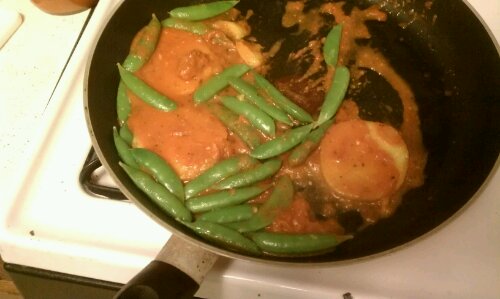Today I picked up a few groceries at both Trader Joes and Shaws. I’ve been reading a bit about the transport of food and how that affects the carbon footprint of what you buy. I’ve started to realize that all my produce usually comes from three places: California, Mexico, and Columbia. So today I decided to shop the way I normally would and then take a look at where my items came from. I found that the only item from New England was the ice cream that I bought (consciously knowing that it came from the northeast). Here’s the list of things that I bought today:
- Nalgene (bought at Eastern Mountain Sports, made in USA, location?)
- Ice Cream (Brighams, Lynnfield, MA)
- Bel Gioioso Romano Cheese (Denmark, Wyoming)
- Bonne Maman Strawberry Preserves (Briars, France)
- Organic Toaster Pastries (Blaine, Washington)
- Chiquita Bananas (Columbia, South America)
- Multigrain O’s Cereal (Product of Canada, dist. Monrovia, California)
- Sugar Snap Peas (Monrovia, California)
- Trader Giotto’s Pomodoro Pasta Sauce (Monrovia, California with ingredients imported from Italy)
- Prince Angel Hair Pasta (dist. Harrisburg, Pennsylvania)
- Cliff Bars (dist. Emeryville, California)
Some items only told me where they were distributed from and some only told me that they were products of a certain country like the USA, France, Columbia or Canada for example. Countries are huge places so they must have been shipped a crazy distance to end up on my plate here in Boston. Some packages only mentioned where they were distributed which again doesn’t really tell you anything. It just shows you the last stop that the product made before it ended up on your plate.
This may not be a new concept to anyone reading this blog but it’s definitely hitting home for me right now. It’s easy to not think about these things because honestly food shopping is too convenient for it to cross my radar as an issue. However, in a culture where everyone knows the price of gas down to the nearest few cents every day ($3.10 out near my work and I don’t even drive) and in a culture whose obsessed with gas mileage and hybrid cars, you’d think we would pay closer attention to how far our food has to travel to get to us. I’m definitely a culprit of this, I haven’t ever really bothered to care about whether my food comes from New England or Argentina. However, the more I learn about the food industry, the more I’ve started to change my perspective. It’s unlikely I’ll move to only buying local goods but I’m definitely going to start making more informed purchasing decisions (Was it really necessary to have a container of yogurt travel from Argentina to California to Boston in order for me to eat it? I’m sure the answer is an emphatic “no”.)
Here’s the meal that I made for myself tonight: Polenta (Monrovia, CA) with Sugar Snap Peas (Monrovia California), and Pomodoro Pasta Sauce (Monrovia, CA with imported tomatoes from Italy).

Polenta, sugar snap peas, and pomodoro sauce. A seemingly simple meal yet it traveled four coast to coast trips (CA to MA) and one crossing of the Atlantic Ocean (Italy to CA) to end up on my plate in Boston. Yikes. The meal tasted good but if you turn the tables around a bit it starts to seem silly: Would I have traveled four widths of the US and cross the Atlantic to eat this meal? Definitely not.
This inspired me to do some searching online for how to calculate the carbon footprint of a grocery bill. That would be very cool (and/or frightening). I wasn’t able to find much except for a large grocery store chain in the UK called Tesco who has started to calculate the carbon footprint of items in their store and put a label on the package to help consumers make smart (and local) buying decisions. Basically they have a black footprint with a white number on the inside that represents the carbon footprint associated with the growing, manufacturing, transportation, and storage of that item. Their goal was to have the label on 500 of their items by this year, I couldn’t find whether or not they succeeded in reaching that goal. Here’s a good article about how Tesco started by putting the carbon footprint calculation on their jugs of milk. When I think of a future of lowering carbon emissions, the future looks a bit like what Tesco is doing.

